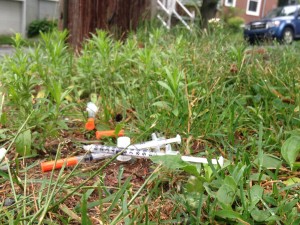More than one third of people managing First Nation drinking water systems aren’t certified by their province.
Circuit Rider Training Program President, Winslow Davis says those managing the water treatment plants on reserve are First Nation members.
He says they are responsible for operating and maintaining the plant, and “ensuring there is safe drinking water being produced.”
According to records released through a Access to Information request, First Nation communities across Canada have “difficulties” certifying and retaining operators.
The briefing note, prepared for the Minister of Indigenous and Northern Affairs Canada, Carolyn Bennett, states, “in 2014-2015, 66 per cent of First Nation systems had operators certified to the level of their drinking water and 56 per cent for wastewater system.”
Qualifications
Davis says uncertified doesn’t mean “unqualified.”
“That’s where the Circuit Rider Training Program comes into effect,” he says.
The Circuit Rider Training Program is a federally funded government program. It gives uncertified people, managing water plants in First Nation communities one-on-one training to help them do their job.
“In most cases they [the trainers] are almost like a mentor,” Davis says.
Certification is needed to have a “standard of acceptance or responsibility” for the water treatment facilities.
“The process is necessary to the profession to help make sure the plant is running properly and the water is safe to drink,” he says.
The certification standards for drinking and wastewater plant managers are set by individual provinces, and require a high school education, or equivalent.
“High rate of turnover of employees”
Davis says every region is different, but there is a “high rate of turnover.”
“Funding is always an issue,” he says. “To pay an operator to stay in the community once they obtain their certification is a challenge because the band doesn’t have enough money to retain them and they can go find work elsewhere.”
The Access to Information records show Indigenous and Northern Affairs Canada knows about the challenges of recruiting and retaining water plant managers.
According to the records, there are three barriers to “certifying and retaining operators on reserve:”
- Community-to-community model: funding full-time staff at a “competitive salary” can be a challenge
- Education: “Insufficient levels” of grade 12 education prevents certification
- Water and wastewater policy: past government policy has “favoured” complex systems which require higher certification levels
“It’s not a glamourous job”
Davis says “recruitment is one thing.” Davis says.
“It’s not deemed as a glamourous job,” he says. “It’s not something that somebody would want to grow up being a water plant operator.”
The challenges aren’t over once people are recruited and trained.
“They see the opportunity off reserve to go make more money,” says Davis. “Because they’re paying more, industry is able to attract with higher salaries, and bonuses.”
Numbers improving
The Access to Information records show that the number of certified people running water treatment plants are up from 2011. At that time, 51 per cent of drinking water systems and 42 per cent of wastewater systems were managed by people certified at the necessary level.
Changes in drinking water and wastewater certification from 2011-2015
Source: Certification of Water and Wastewater Systems Operators, Indigenous and Northern Affairs Canada
Source: Certification of Water and Wastewater Systems Operators, Indigenous and Northern Affairs Canada
Since 2011, an annual performance inspection has been done of water treatment plants on reserves across Canada.
The 2015 inspection says that 84 per cent of drinking water managers and 78 per cent of wastewater managers were in a training program to achieve, maintain, or upgrade skill levels.
Davis says the Circuit Rider Training Program is one of the best ways to ensure community has safe drinking water, and water treatment plant employees are being trained.
But says more can be done by local governments “to recognize their [water treatment managers] contribution to the safety of their community” by providing safe drinking water.

